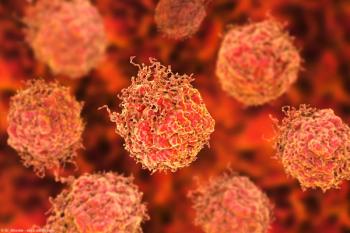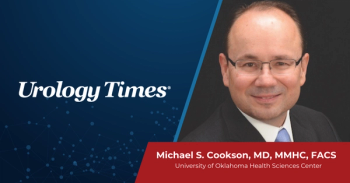
Prophylactic whole-pelvic radiotherapy provides benefit in high-risk prostate cancer
In a phase 3 trial, biochemical failure-free survival and disease-free survival were improved with prophylactic whole-pelvic radiotherapy versus prostate-only radiotherapy.
Prophylactic whole-pelvic radiotherapy (WPRT) improved biochemical failure-free survival (BFFS) and disease-free survival compared with prostate-only radiotherapy (PORT) in patients with high-risk, locally advanced prostate cancer, according to findings from a phase 3 trial.1
At a median follow-up of 68 months, the 5-year BFFS rate was 95% with WPRT compared with 81.2% with PORT (HR, 0.23; P <.0001). The 5-year DFS rates were 89.5% versus 77.2%, respectively (HR, 0.40; P = .002). These BFFS and DFS benefits were sustained across prognostic subgroups.
WPRT was also associated with improved distant metastasis–free survival (95.9% vs 89.2%; HR, 0.35; P = .01); however, overall survival (OS) was not significantly different between the 2 treatment approaches (92.5% vs 90.8%; HR, 0.92; P = .83).
“Prophylactic pelvic irradiation using contemporary dose and technique of radiation along with long-term androgen deprivation for high-risk and very high-risk prostate cancer should be routinely considered as standard for these patients,” the authors wrote.
The combination of androgen-deprivation therapy (ADT) and external beam radiotherapy is a standard radical treatment for patients with locally advanced, nonmetastatic prostate cancer; however, the evidence supporting prophylactic radiotherapy to the lymph nodes is inconclusive.
The open-label, single-center phase 3 study included 224 patients undergoing radical radiotherapy for node-negative prostate adenocarcinoma. Patients had an estimated nodal risk of at least 20%. Patient characteristics were well balanced between the 2 study arms. Across the overall population, the median age was 66 years, the median baseline PSA level was 28.2 ng/mL, 53.6% of patients had a nodal risk score (Roach formula) ≤40%, and 46.4% had a nodal risk score >40%.
The Gleason grade group was 4 for 23.9% of patients and 5 for 25.3% of patients. Regarding androgen suppression, 18.9% of patients underwent orchiectomy and 81% received medical ADT. Twenty-seven percent of patients had undergone transurethral resection of the prostate. The majority of patients had a tumor stage of T3a or higher: T3a (31.5%), T3b (38.7%), and T4 (8.1%).
All patients were treated with image-guided, intensity-modulated radiotherapy, as well as at least 2 years of ADT. Patients were randomized in a 1:1 ratio to PORT (n = 114; 68 Gy in 25 fractions to prostate) or WPRT (n = 110; 68 Gy in 25 fractions to prostate; 50 Gy in 25 fractions to nodal region). The primary end point was 5-year BFFS, and DFS and OS were secondary end points.
There was no significant variation in acute genitourinary (GU) or gastrointestinal (GI) toxicities between the 2 arms. There was a significantly higher incidence of grade ≥2 late GU toxicity in the WPRT arm at 20% versus 8.9% in the PORT arm (P = .02); however, there was not a significant difference in grade ≥2 late GI toxicity at 8.2% versus 4.5%, respectively (P = .28). There were no observed incidents of grade IV GU or GI toxicity in either of the treatment groups.
In their conclusion, the authors wrote, “Prophylactic WPRT using a contemporary dose and technique along with long-term ADT for high-risk and very high-risk prostate cancer resulted in a large and significantly improved BFFS and DFS as compared with PORT, but did not impact OS.”
They added that, based on their findings and the available data in the literature at the current time, “prophylactic pelvic radiotherapy should be routinely considered for these patients.”
Reference
1. Prostate-only versus whole-pelvic radiation therapy in high-risk and very high-risk prostate cancer (POP-RT): outcomes from phase iii randomized controlled trial [published online ahead of print January 26, 2021]. J Clin Oncol. doi: 10.1200/JCO.20.03282
Newsletter
Stay current with the latest urology news and practice-changing insights — sign up now for the essential updates every urologist needs.


















